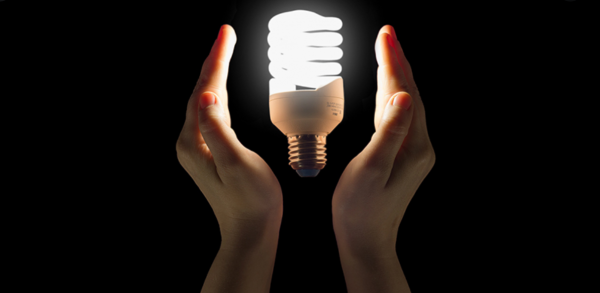Make LED Lights Brighter
 The brightness of the LED lamp is determined by the working current. The larger the current, the brighter it is, but each LED has a rated working current. For example, the working current of ordinary white light small LEDs is about 25MA. If the current exceeds Ratings can cause premature LED decay or damage. Each color of the LED light requires a voltage, not to increase the voltage if you want to increase the brightness. This is not a problem. The specified voltage, such as 3v, will definitely burn out after you pressurize it. It is necessary to increase the brightness through scientific principles. The brightness is calculated by power. The more power you need, the more power you have. The higher the power, the higher the brightness, and the lower the power.
The brightness of the LED lamp is determined by the working current. The larger the current, the brighter it is, but each LED has a rated working current. For example, the working current of ordinary white light small LEDs is about 25MA. If the current exceeds Ratings can cause premature LED decay or damage. Each color of the LED light requires a voltage, not to increase the voltage if you want to increase the brightness. This is not a problem. The specified voltage, such as 3v, will definitely burn out after you pressurize it. It is necessary to increase the brightness through scientific principles. The brightness is calculated by power. The more power you need, the more power you have. The higher the power, the higher the brightness, and the lower the power.
1.Principle of LED brightness:
The core of the light-emitting diode is a wafer composed of a p-type semiconductor and an n-type semiconductor. There is a filter layer between the p-type semiconductor and the n-type semiconductor, which is called a p-n junction.
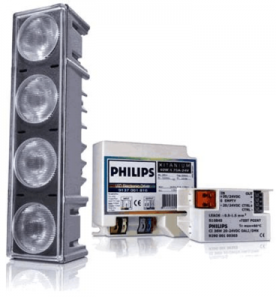 When a forward bias is applied across the PN junction, in some semiconductor materials, the carrier concentration in the P region is much greater than that in the N region, and the accumulation of non-equilibrium holes is much greater than the electron accumulation in the P region. (Corresponding to the NP junction, the situation is exactly the opposite.) The minority carriers generated by current injection are unstable. For PN junction systems, the unbalanced holes injected into the valence band must recombine with the electrons in the conduction band. , The excess energy is radiated outward in the form of light, thereby directly converting energy into light energy. A reverse voltage is applied to the PN junction, and minority carriers are difficult to inject, so it does not emit light.
When a forward bias is applied across the PN junction, in some semiconductor materials, the carrier concentration in the P region is much greater than that in the N region, and the accumulation of non-equilibrium holes is much greater than the electron accumulation in the P region. (Corresponding to the NP junction, the situation is exactly the opposite.) The minority carriers generated by current injection are unstable. For PN junction systems, the unbalanced holes injected into the valence band must recombine with the electrons in the conduction band. , The excess energy is radiated outward in the form of light, thereby directly converting energy into light energy. A reverse voltage is applied to the PN junction, and minority carriers are difficult to inject, so it does not emit light.
This kind of diode made by the principle of injection type electroluminescence is called light emitting diode, collectively called LED. Therefore, the basic working mechanism of LED is an electro-optical conversion process. When it is in the forward working state (that is, the forward voltage is applied across the two ends), when the current flows from the LED anode to the cathode, usually, the larger the band gap, the more The greater the energy output, the shorter the corresponding photon, and the longer the wavelength. Therefore, due to the different forbidden band widths of semiconductor crystals, different colors and different intensities of light from ultraviolet to infrared are emitted.
2.Factors affecting the brightness of LED: light efficiency, temperature, dimming
Influencing factor 1-Light effect
(1) What is the light effect:
 The ratio of the total luminous flux emitted by a light source to the electrical power (watts) consumed by the light source is called the light efficiency of the light source. The higher the luminous efficiency value, the stronger the ability of the lighting equipment to convert electrical energy into light energy, that is, the energy-saving performance of the lighting equipment is greater under the condition that the same brightness is provided; Strong, that is, the greater the brightness. Luminous was originally meant to be bright. Luminous was used for measurement, meaning brightness, abbreviated as lm. The unit of luminous efficiency is brightness / watt, sometimes Luminance’s transliteration “lumen” is taken as lumen / watt.
The ratio of the total luminous flux emitted by a light source to the electrical power (watts) consumed by the light source is called the light efficiency of the light source. The higher the luminous efficiency value, the stronger the ability of the lighting equipment to convert electrical energy into light energy, that is, the energy-saving performance of the lighting equipment is greater under the condition that the same brightness is provided; Strong, that is, the greater the brightness. Luminous was originally meant to be bright. Luminous was used for measurement, meaning brightness, abbreviated as lm. The unit of luminous efficiency is brightness / watt, sometimes Luminance’s transliteration “lumen” is taken as lumen / watt.
The light effect is also called the luminous efficiency of the light source or the power factor of the light source, which represents the ratio of the luminous flux emitted from the light source to the electric power consumed by the light source. That is, η = φ / E = φ / (φ + P) where η is the light efficiency, φ is the light energy radiated by the light source, E is the power of the light source, and P is the energy lost by the light source, which is mainly the amount of heat. At the same time, the relationship between heat generation and current is: P = I²R. Obviously, as the current increases, the luminous flux increases. But on the other hand, the increase of the current will cause the heat loss of the light source to increase, and the overall effect is to reduce the light efficiency.
(2) What are the factors that affect the LED light efficiency
The factors that affect the light efficiency of LEDs are as follows:
1.LED Chip:
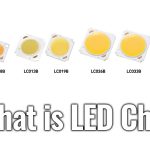 The quality of the chip determines the electro-optical conversion efficiency and the main reason that affects the light efficiency.
The quality of the chip determines the electro-optical conversion efficiency and the main reason that affects the light efficiency.
2.Phosphor:
The efficiency of the phosphor of the child (intuitively expressed as brightness). The higher the efficiency of the phosphor, the higher the light efficiency of the LED device. Increasing the efficiency of phosphor neutrons is usually accompanied by an increase in particle size. The increase in particle size will cause serious sedimentation, which makes the LED device dispensing process difficult to control and the yield rate is low. Particle size and particle size distribution The distribution of the phosphor in the silica gel has little effect on light efficiency but has a more significant effect on light quality. For example, in COB products, the phosphor is deposited on the chip to increase the uniformity of light output by centrifugation. Increase the use of phosphors.
3.Bracket:
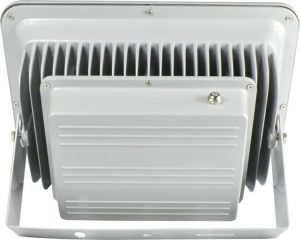 the material of the bracket (such as copper, silver, iron, etc.) affects heat dissipation and indirectly affects chip performance and affects light efficiency; the material of the reflector cup (such as PPA, PCT, EMC, etc.), the flatness of the silver-plated mirror surface at the bottom of the reflector cup And thickness affect light extraction rate.
the material of the bracket (such as copper, silver, iron, etc.) affects heat dissipation and indirectly affects chip performance and affects light efficiency; the material of the reflector cup (such as PPA, PCT, EMC, etc.), the flatness of the silver-plated mirror surface at the bottom of the reflector cup And thickness affect light extraction rate.
4.Silica gel
Silica gel has different light extraction rates due to different refractive indexes, which indirectly affects light efficiency. The higher the refractive index, the higher the light extraction rate. However, the selection of silica gel with different refractive indexes must be combined with the power and light emitting area of the LED device in addition to the light efficiency. . In addition, the quality of similar gold wire, primer, and silver glue will indirectly affect the conductivity due to the effects on the conductivity and thermal conductivity.
5.Color temperature affects LED efficiency
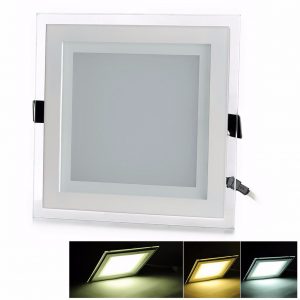 Color temperature and CRI have a significant effect on the luminous efficiency of LEDs. Specifically, the higher the color temperature, the higher the luminous efficiency; the higher the CRI, the lower the luminous efficiency. In this regard, the key difference between LEDs and conventional light sources is that the efficiency of the LEDs can be adjusted by the operating current. Due to the significant cost savings of LEDs, full consideration should be given when selecting an LED system. The choice of color temperature has a significant impact on lighting efficiency, a way to efficiently plan lighting solutions. LEDs with a high color temperature (eg 5000K) are usually more efficient than those with a low color temperature (eg 3000K).
Color temperature and CRI have a significant effect on the luminous efficiency of LEDs. Specifically, the higher the color temperature, the higher the luminous efficiency; the higher the CRI, the lower the luminous efficiency. In this regard, the key difference between LEDs and conventional light sources is that the efficiency of the LEDs can be adjusted by the operating current. Due to the significant cost savings of LEDs, full consideration should be given when selecting an LED system. The choice of color temperature has a significant impact on lighting efficiency, a way to efficiently plan lighting solutions. LEDs with a high color temperature (eg 5000K) are usually more efficient than those with a low color temperature (eg 3000K).
The graph in Figure 1 shows the spectrum (or spectral power distribution-SPD) of different CCT values for LEDs when the color rendering index (CRI) Ra> 80. The SPD curve is established on the human sensitivity curve Vλ. In order for LEDs to produce white light, LED chips that emit blue light are usually used. Some of these lights are converted to longer wavelengths (green, yellow, and red) by converters or phosphors, adding all these colors together to produce white light. However, there is a loss during the conversion process. The more the wavelength of the light is changed, the larger the loss is. The reason is that the energy difference between the higher energy (blue) light and the lower energy (red) light is converted into heat.
Minimizing losses requires accurate calculations of the converter’s absorption and emission wavelengths. However, the simplified case is enough to explain the basic principles. For example, for a warm color temperature of 3000K, a large amount of red light needs to be converted. However, this requirement leads to greater losses, which reduces luminous efficiency compared to 4000K. For a high color temperature of 5000K, blue light only needs to be converted to green light, and less to red light, which is why the luminous efficiency is increased than 4000K.
6. Effect of color rendering on LED light efficiency
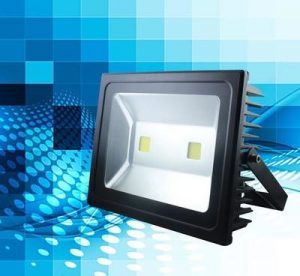 As mentioned above, after selecting a suitable converter, the composition of the chromatogram has a decisive influence on the efficiency of the LED. The converter portfolio was developed for different CRIs and is optimized for CRI and efficiency. The difference between CRI 70, 80 and 90 can be seen very clearly when the red line is displayed. To reproduce these colors as realistically as possible, a high proportion of long-wave light is required; in other words, the red end of the spectrum. Figure 3 shows the SPD of 4000K LEDs at different CRI values. The high red ratio of the CRI 90 version can be clearly seen. As mentioned above, producing such a high ratio involves high losses. In addition, most of the red energy generated clearly exceeds the sensitivity curve of the human eye Vλ, which results in a further reduction in luminous efficiency. The effect of different color temperatures on the luminous efficiency of LEDs is in the range of ± 5%, and the effect of CRI at different values is usually in the range of ± 15%
As mentioned above, after selecting a suitable converter, the composition of the chromatogram has a decisive influence on the efficiency of the LED. The converter portfolio was developed for different CRIs and is optimized for CRI and efficiency. The difference between CRI 70, 80 and 90 can be seen very clearly when the red line is displayed. To reproduce these colors as realistically as possible, a high proportion of long-wave light is required; in other words, the red end of the spectrum. Figure 3 shows the SPD of 4000K LEDs at different CRI values. The high red ratio of the CRI 90 version can be clearly seen. As mentioned above, producing such a high ratio involves high losses. In addition, most of the red energy generated clearly exceeds the sensitivity curve of the human eye Vλ, which results in a further reduction in luminous efficiency. The effect of different color temperatures on the luminous efficiency of LEDs is in the range of ± 5%, and the effect of CRI at different values is usually in the range of ± 15%
Influencing factor 2-Temperature
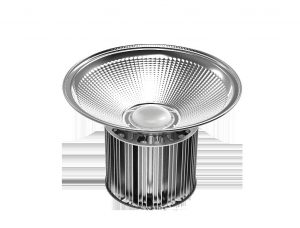 Because the heat sink’s heat dissipation capacity is directly proportional to its surface area, the LED light source’s heat generation is directly proportional to its power. LEDs have high luminous efficiency, so the heat they generate is actually relatively low compared to many traditional light sources. But because it is a semiconductor device, it is very afraid of heat. In most cases, the manufacturer will control the node temperature (the innermost PN junction temperature of the LED) within 80 ° C. At present, the most common method is to add an aluminum heat sink (similar to the way of the heat sink behind the computer CPU). So the better the heat dissipation technology, the higher the LED’s luminous efficiency, the brighter the LED light.
Because the heat sink’s heat dissipation capacity is directly proportional to its surface area, the LED light source’s heat generation is directly proportional to its power. LEDs have high luminous efficiency, so the heat they generate is actually relatively low compared to many traditional light sources. But because it is a semiconductor device, it is very afraid of heat. In most cases, the manufacturer will control the node temperature (the innermost PN junction temperature of the LED) within 80 ° C. At present, the most common method is to add an aluminum heat sink (similar to the way of the heat sink behind the computer CPU). So the better the heat dissipation technology, the higher the LED’s luminous efficiency, the brighter the LED light.
LED lamp temperature:
 General safety regulations apply in the range of -20 °C to 65 °C. The operating temperature of LED lamps is below 65 ℃. The temperature is mainly related to the lamp beads and the radiator and the power of the lamp beads. In addition, it is necessary to determine whether the lamp cup radiator is matched with the lamp beads. Excessive temperature can easily lead to serious lamp luster decay and even bring potential safety hazards. Generally, when the bulb reaches thermal equilibrium, the lamp pin temperature is not higher than 65 ° C, and the surface temperature of the heat sink is not higher than 55 ° C.
General safety regulations apply in the range of -20 °C to 65 °C. The operating temperature of LED lamps is below 65 ℃. The temperature is mainly related to the lamp beads and the radiator and the power of the lamp beads. In addition, it is necessary to determine whether the lamp cup radiator is matched with the lamp beads. Excessive temperature can easily lead to serious lamp luster decay and even bring potential safety hazards. Generally, when the bulb reaches thermal equilibrium, the lamp pin temperature is not higher than 65 ° C, and the surface temperature of the heat sink is not higher than 55 ° C.
LED lights convert more than 80% of the electrical energy into light energy, and a small part is converted into heat energy, plus the heat sink of the lamp itself, so the overall LED lamp temperature is not high, if your lamp temperature is high , Then it may be that the manufacturer has designed the current too large in order to increase the overall brightness of the lamp. But even though the brightness is enhanced.Under the same wattage, increasing the number of LED lamp beads can reduce the temperature, extend the life, and increase the brightness.
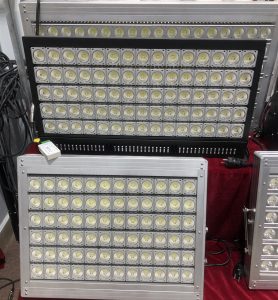
By increasing the number of LED lamp beads, the brightness and long-term overcurrent are increased, which greatly reduces the life of the LED lamp. It is recommended to use constant current drive. However, the current through the LED lamp beads greatly reduces the life. LED brightness is an important determinant of display brightness. The higher the brightness of the LED, the greater the margin of the current used, which is beneficial to saving power consumption and keeping the LED stable. LEDs have different angle values. When the chip brightness is fixed, the smaller the angle, the brighter the LED, but the smaller the viewing angle of the display.
Generally, a 100-degree LED should be selected to ensure a sufficient viewing angle of the display. For displays with different dot pitches and different viewing distances, a balance point should be found in brightness, angle and price. A single lamp bead has strict requirements for voltage. It is burned above the nominal voltage, and dim or no light below the nominal voltage. Under a certain current, the more lamp beads in series, the greater the brightness In the case of a certain voltage, the more lamp beads connected in parallel, the greater the brightness.
Influencing factor 3-Dimming
LED dimming
As a light source, dimming is very important. Not only to get a more comfortable environment in the home, today, it is more important to reduce unnecessary electric light to further achieve the purpose of energy saving and emission reduction. And for LED light sources, dimming is also easier to implement than other fluorescent lamps, energy-saving lamps, high-pressure sodium lamps, etc., so it should be added to various types of LED lamps.
The first part uses DC power LED dimming technology
Adjust the brightness by adjusting the forward current
It is easy to change the brightness of the LED. The first thing that comes to mind is to change its driving current, because the brightness of an LED is almost directly proportional to its driving current.
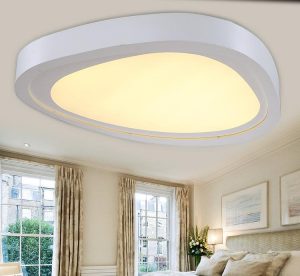 1.1 Method for adjusting forward current
1.1 Method for adjusting forward current
The easiest way to adjust the LED current is to change the current detection resistor in series with the LED load. Almost all DC-DC constant current chips have an interface to detect the current, which is compared with the detected voltage and the internal reference voltage of the chip to control Constant current. However, the value of this detection resistor is usually very small, only a few ten ohms. If a potentiometer of a few ten ohms is installed on the wall to adjust the current, it is not possible, because the lead resistance will also have a few ten ohms. So some chips provide a control voltage interface. Changing the input control voltage can change its output constant current value.
1.2 Adjusting the output constant current value-adjusting the forward current will shift the chromatogram
However, using the method of adjusting the forward current to adjust the brightness will cause a problem, that is, it will also change its spectrum and color temperature while adjusting the brightness. Because white LEDs are currently generated by exciting blue phosphors with blue LEDs, when the forward current decreases, the brightness of blue LEDs increases and the thickness of $ phosphor does not decrease proportionally, thereby increasing the dominant wavelength of its spectrum.

